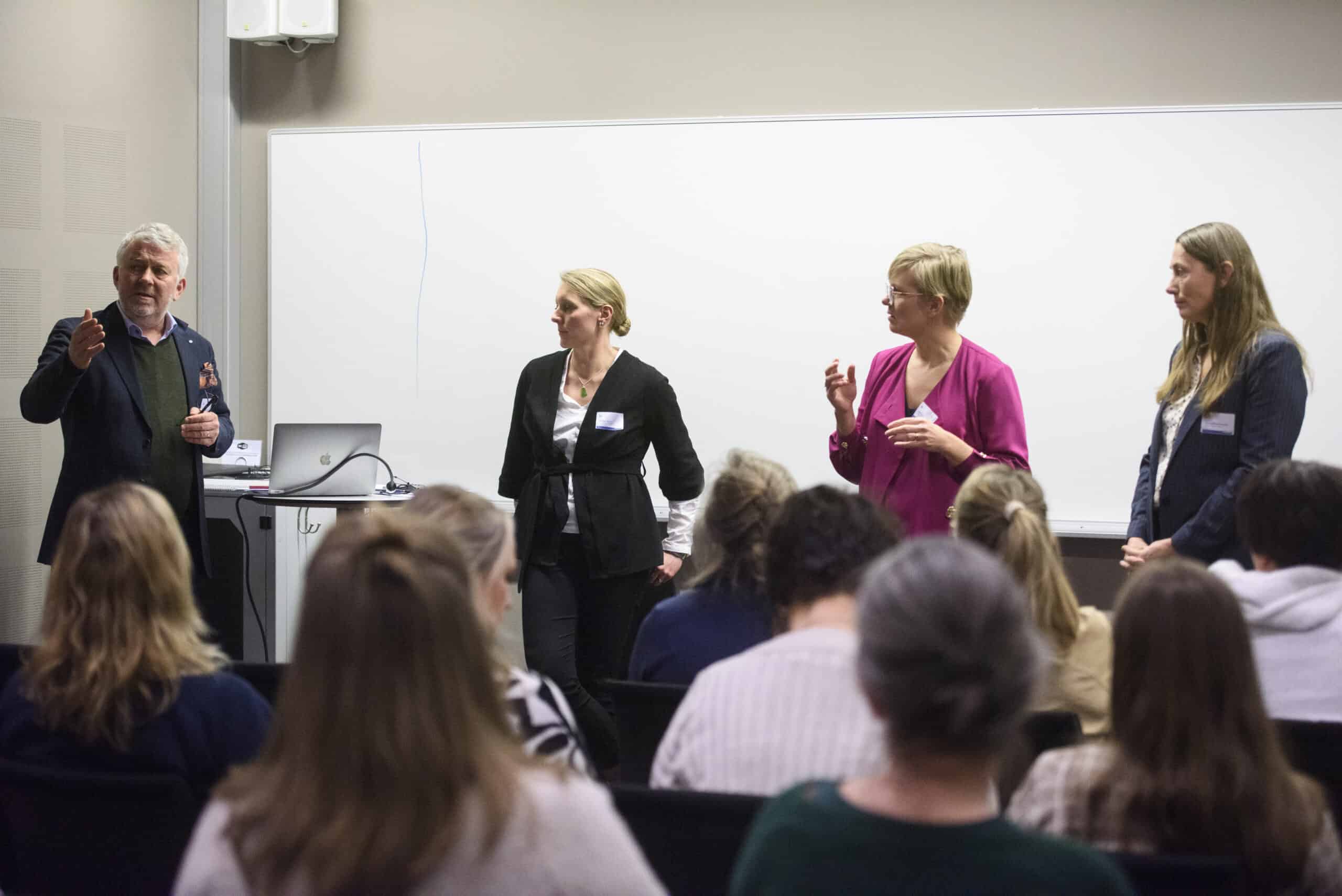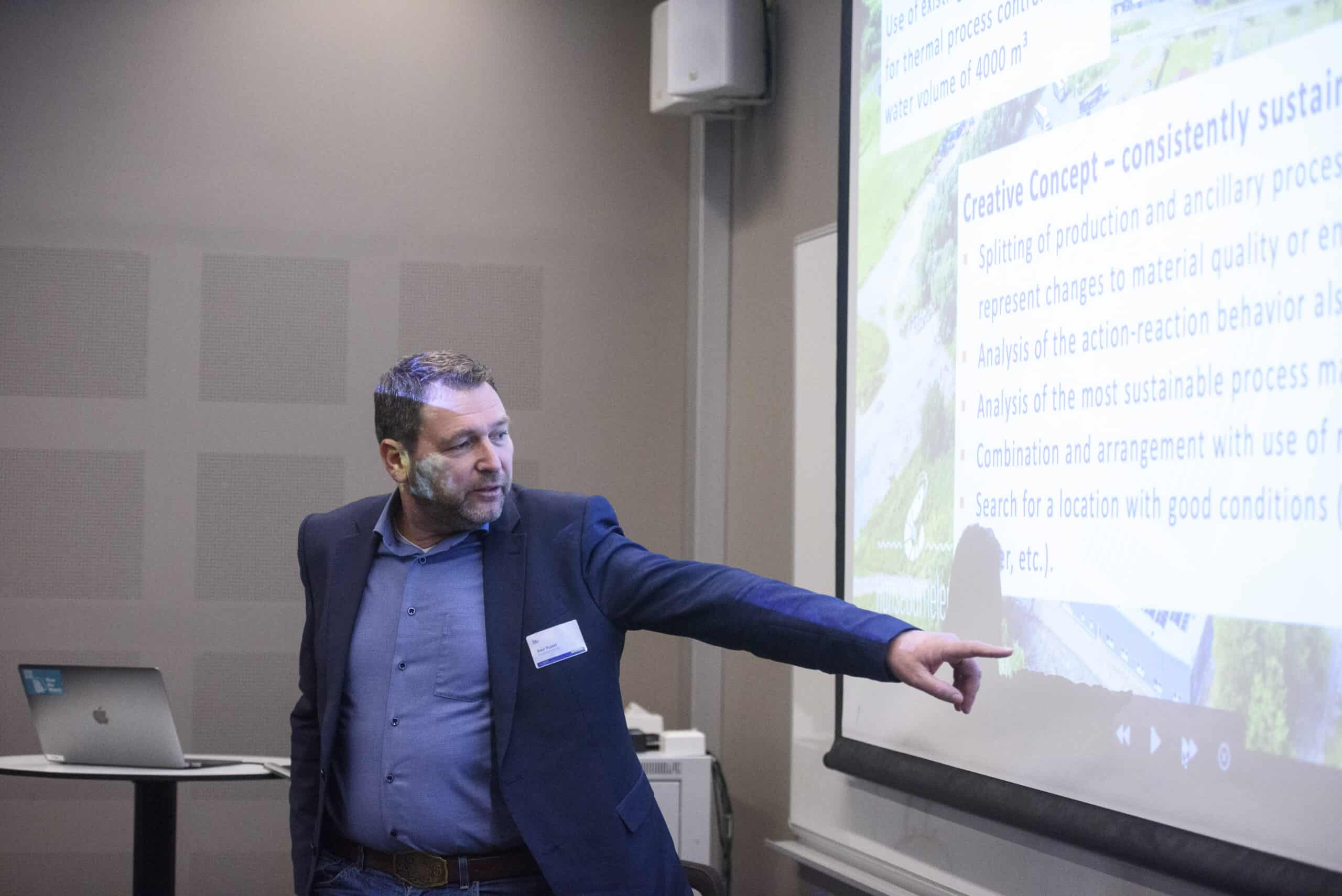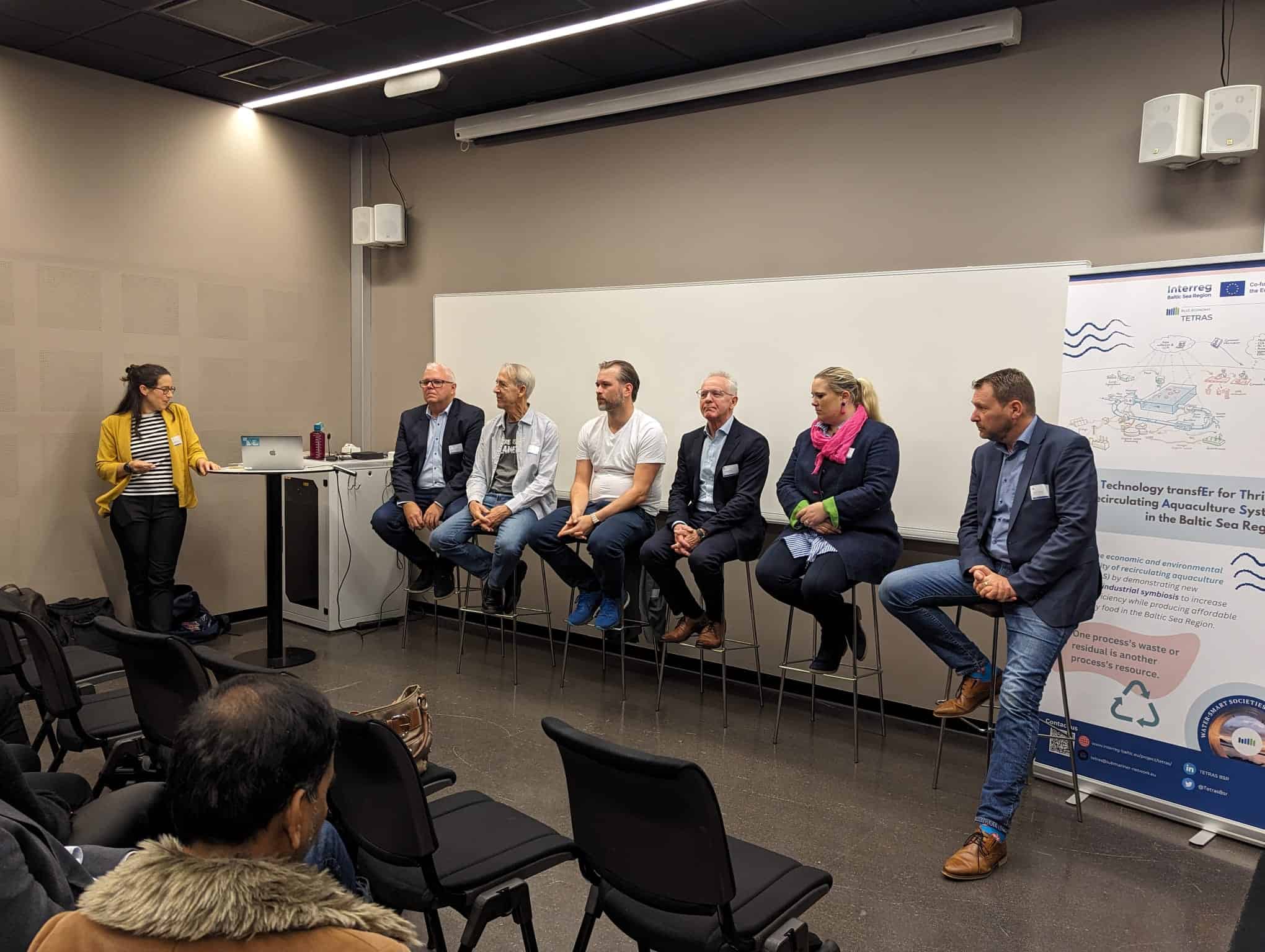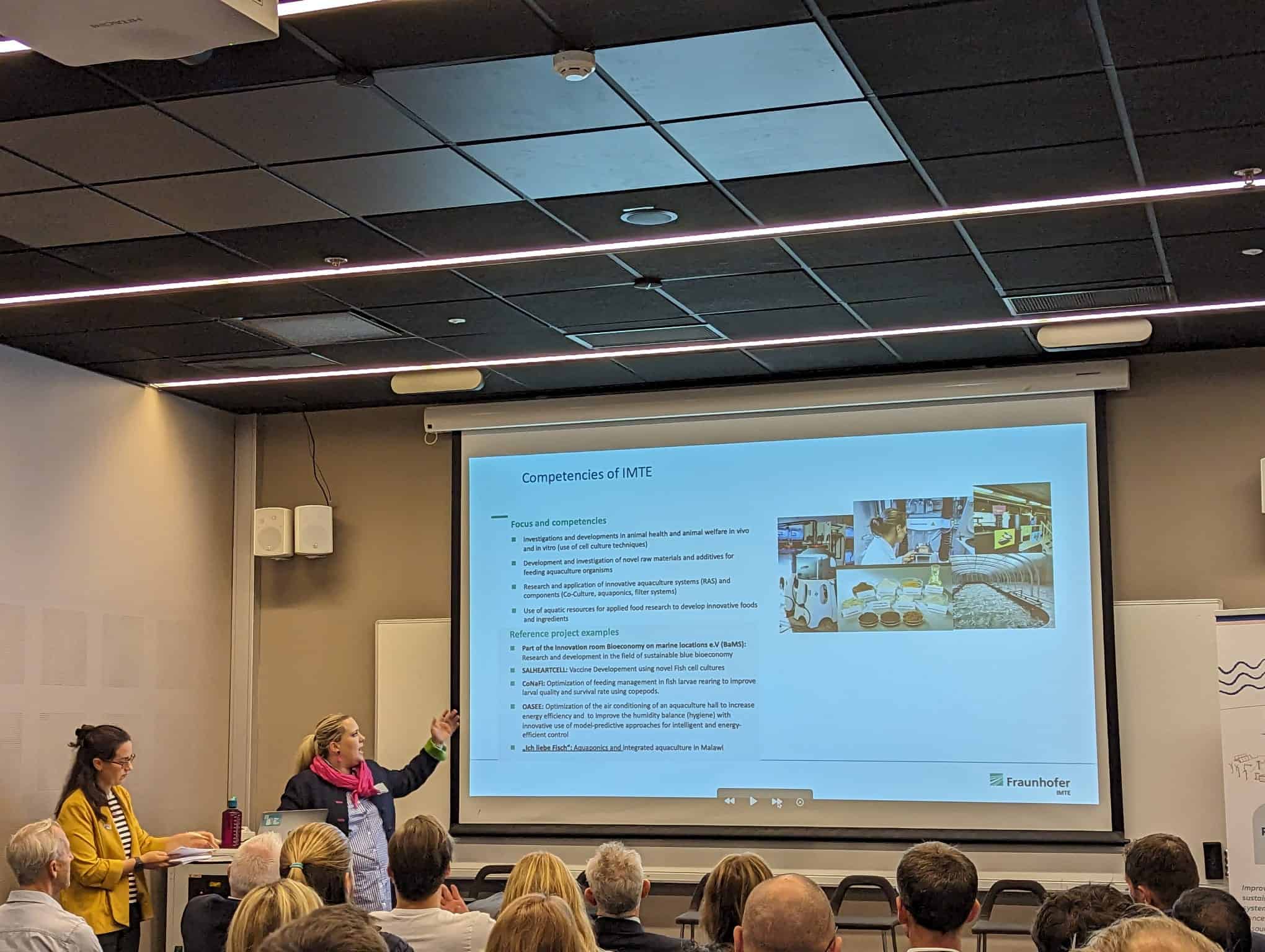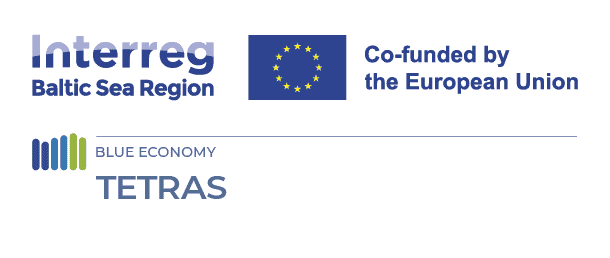
TETRAS in Focus: Driving Sustainable Initiatives at the 1st Mission Arena
24 November 2023
More than 500 actors active in the Blue Economy across the Baltic and North Sea, along with other regions, convened at the 1st Mission Arena in Gothenburg. The event, held from November 14th to 16th, served as a platform for in-depth discussion on propelling the Blue Economy toward a carbon-neutral and circular future by 2023.
The Blue Economy plays a fundamental role in securing the sustainable future of the Baltic and North Sea (BANOS) regions. Extending from fisheries to aquaculture, shipping to renewable energy, marine and aquatic resources are pivotal for fostering economic growth, driving innovation, and ensuring environmental stewardship.
At the heart of this movement is the BlueMissionBANOS, dedicated to fostering a carbon-neutral, circular blue economy by uniting stakeholders from policy, industry, science, and the public. Addressing various environmental concerns, the initiative aims to prevent water pollution, protect, and restore aquatic ecosystems, and preserve biodiversity.
The TETRAS project and its partners seized the opportunity to engage with stakeholders to discuss crucial aspects of the project such as best practices to foster industrial symbiosis and collaboration between the Green and the Blue sectors, as well as the state of the land-based aquaculture sector in the region and what is needed to bring it forward. TETRAS hosted two workshops as part of the programme.
Symbiosis: industrial AND social
Industrial symbiosis (IS) is a strategic concept that entails one company or sector making use of underused resources –such as waste, by-products, energy, water, and expertise– from another: resulting in the extension of the productive life of resources, keeping them in use for longer, and generating revenue while promoting sustainable resource management.
IS is more than a brilliant idea; it’s a collaborative approach that brings together companies from different sectors. It’s about creating synergies, forging connections, and building supply chains that are not just economically viable but also environmentally and socially responsible. This approach is no easy task; it requires deep knowledge of industrial processes and business/social relations.
The workshop aimed to gain insights from stakeholders who have hands-on experience in industrial symbiosis networks and in seeking to foster economic development through IS and the challenges this involves. The speaker’s panel was composed of Elise Dahle from Land Meets Ocean, a Norwegian initiative that seeks to unite four industry clusters seeking to accelerate a circular and sustainable bioeconomy; Annette Løttrup-Moore from Business Lolland-Falster a Danish regional business organisation that looks to promote economic development in the region through IS; and Stina Gottlieb from Sotenäs Municipality in Sweden and part of the Sotenäs Centre of Symbiosis is located. The session was moderated by Tom O. Kleppestø from the Ocean Industry Forum Oslofjord and a member of the TETRAS project advisory group.
With a room full of professionals with interest and knowledge in industrial symbiosis sometimes is easy to forget that outside this bubble, it is still necessary to communicate what is industrial symbiosis and the importance of transitioning from a linear to a circular mindset, aspects highlighted during the discussion. When explaining the circular economy approach—narrow: use less, slow: use longer, close: use again, and regenerate: make clean—the regeneration part is challenging to communicate and implement. It’s crucial to share good practice examples to help stakeholders understand the potential of industrial symbiosis and what it looks like.
To foster IS, it is essential to create accessible business models for scaling out and up. These models should internalise externalities. Moreover, promoting investment in IS requires a shift from a short-term to a long-term mindset and from an economy of scale to an economy of scope, where efficiencies come from variety, not necessarily volume. Additionally, reclassifying materials, side-streams, and residuals is imperative to extend the productive resource life, generate revenue, and promote sustainable resource management.
In industrial symbiosis networks, trust is pivotal for success. Regional business organisations and municipalities play a key role by providing a neutral ground for industries to connect and create synergies, fostering trust between parts. Trust is a significant challenge when replicating industrial symbiosis setups in other regions.
Beyond industrial symbiosis, there is social symbiosis, which plays a crucial aspect in the success of projects. People, and especially the local community, are key to the growth and expansion of IS networks. While there are numerous challenges in implementing industrial symbiosis, one highlighted from this session is the commitment to fostering circular practices. Through collaboration among actors, industrial symbiosis can be advanced.
Land-Based Aquaculture
Recirculating aquaculture systems (RAS), though not a novel concept, have gained remarkable significance in recent years. The initial need to prove the concept of producing high-quality fish in closed-land aquaculture systems has transitioned into a phase focused on scalability, economic viability, and environmental performance. We got together to discuss the barriers and drivers of RAS development in the region.
The session started with a brief presentation by the speakers where they shared their background and current activities, this was followed by a moderated discussion on the current maturity level of the industry and what is needed to bring it forward.
The speaker’s panel was composed of Rupert Baur, HanseGarnele GmbH & My Fish Plant (DE), Ulf Nermark, WA3RM (SE), Thue Holm, Aquafounders Capital (NL), Franziska Färber, Fraunhofer IMTE (DE), Thorsten Vammen, General Manager of Frea Solutions (DK), and Brian Thomsen, Danish Aquaculture Producer Organisation (DK). The extensive knowledge and experience in RAS gathered by the speakers made the discussion highly engaging. The time was not enough, and the discussion could have continued, which is evidence of the high interest in RAS as well as the many challenges that need to be overcome.
During the discussion, it was brought up that the RAS industry is still immature. Species like trout, shrimp, and salmon proved it is possible to grow high-quality seafood in closed-land-based systems, nevertheless, the focus now is on scalability, economic viability, and environmental performance. High amounts of capital are needed for this, and currently, RAS represents high-risk investments for commercial investors. For new projects, initiate proof of concept with small-scale operations before scaling up. In symbiosis setups, there needs to be a high level of trust between industries. Additionally, every system needs to have redundancy as a preventive measure.
Among the topics discussed, here are some key takeaways:
- There is a need to clearly define recirculating aquaculture systems (RAS) and the diverse factors that need to be considered such as life stage, percentage of water recirculation, marine or freshwater, species, circularity indicators, etc.
- Promote RAS understanding among the public and authorities.
- Advocate for transparency in industry practices and sustainability.
- Create synergies by pairing RAS with other industries for efficient resource use, e.g. industrial symbiosis setups.
- R&D in RAS facilities is key for the continuous improvement of production systems.
- Acknowledge the importance of human capital, “better to have good staff and a bad system, than having a good system and bad staff.”
- RAS professionals require a different set of skills than other aquaculture production methods,
- Education: align curricula with industry needs through collaboration with schools and universities.
To bring the RAS sector forward, it is necessary to implement EU-standardized aquaculture and RAS regulatory framework, reclassify RAS side-streams for extended productivity and encourage valorisation (e.g. sludge), integrate RAS into land spatial planning, identifying, and fostering synergies with other industries, raise public awareness about RAS and its advantages, and promote aquaculture as an appealing career path for the youth.
Anticipating Tallinn’s Horizon
Following the inaugural 1st Mission Arena, the BlueMissionBANOS project is set to continue its event series. The forthcoming 2nd Mission Arena scheduled for April 25th and 26th, 2023, in Tallinn, Estonia, will specifically spotlight the local and regional communities of Estonia, Latvia, Finland, and Sweden (Gotland and the southeast). These gatherings serve as a nexus for collaboration within the Blue Economy, so save the dates and join us in Tallinn!
Stay informed, visit the BlueMissionBANOS website: https://bluemissionbanos.eu/events/
